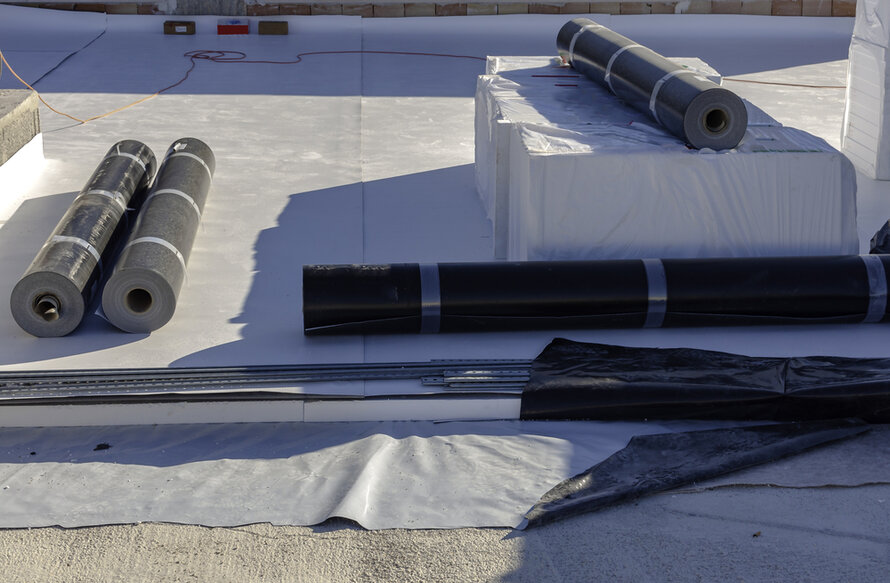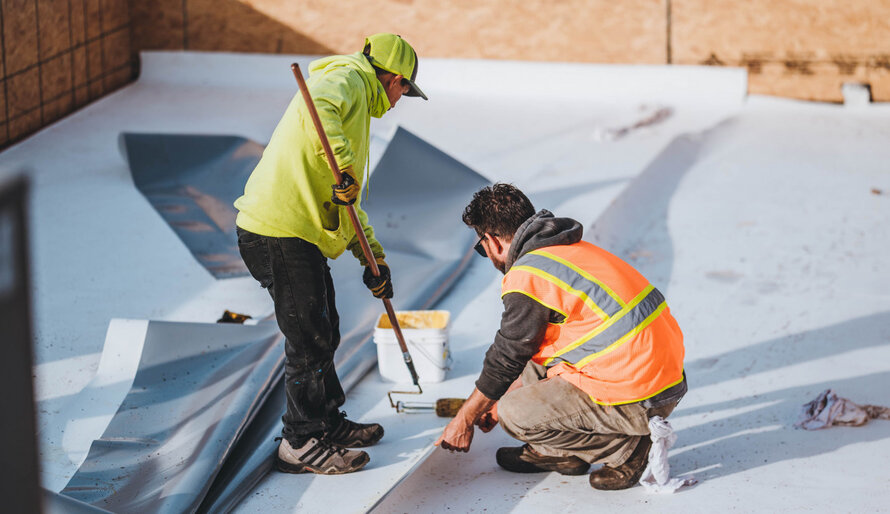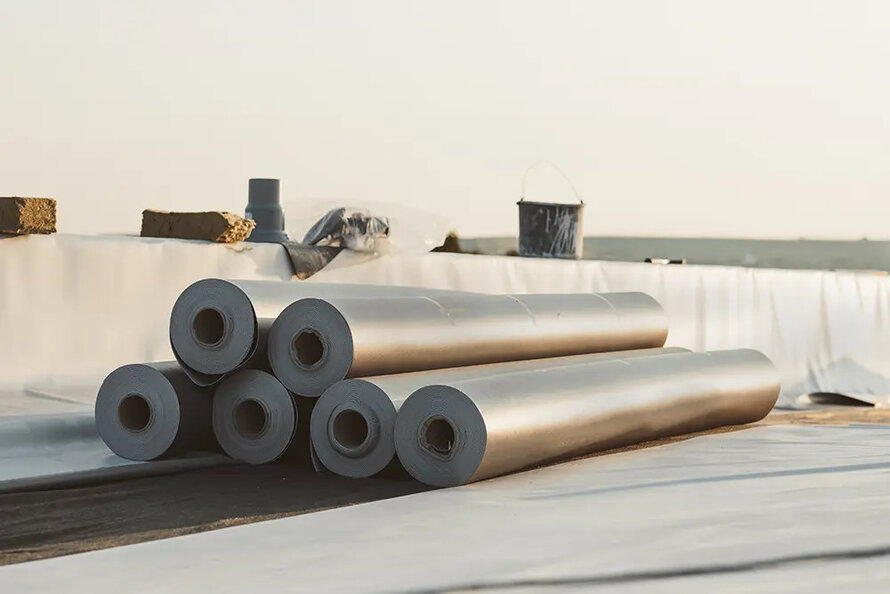Imagine a roofing material that provides impressive energy proficiency, longevity, and affordability in one. You can immediately refer to TPO roof (Thermoplastic Olefin) - a modern approach gaining popularity among homeowners, enterprises, and builders alike.
What if a TPO roof truly is the perfect choice for your projects? Despite promising several advantages, it's necessary to look beyond the surface and consider both the upsides and potential downsides. In this article, we'll learn about the positives and negatives of TPO roofs, analyze the cost factors, and compare them to other roofing alternative solutions to make informed decisions.
1. TPO Roof: Pros

Do you know what impressive highs the TPO roof has?
The TPO roof gives reflective characteristics helping reflect sunlight away from the building and cool the house during warm months. This can be beneficial to reduce the need for air conditioning. This power conservation contributes to a lower overall cost when considering the long-term energy savings of the roof.
Let's explore the key advantages that make TPO roofs a popular solution:
- Cost-saving (Compared to PVC): TPO roof is budget-friendly, providing comparable resource efficiency performance and similar thermal sealing capabilities, but at a lower cost than PVC.
- High sturdiness and durability: TPO is sturdy, and resistant to tears, dirt, and mold. The strength of hot-welded joints is three times stronger than that of rubber roofs with tape and six times stronger than that of glued seams, ensuring long-lasting achievements.
- Energy conservation: With UV protection, the TPO roof shows the function of reducing cooling costs and meets EPA Energy Star standards, thereby contributing to lower electricity bills and cooler buildings.
- Ease of installation: TPO is lighter and easier to use than EPDM, thereby shortening labor time and expenditures for installation.
- Adaptable to lots of building styles: Available in a variety of colors (black, white, grey), TPO brings design adaptability while preserving power efficiency, making it great for multiple architectural formats.
- Lightweight: TPO's relatively low weight which is a part of fuel efficiency in the automotive area, simplifies the installation process in construction projects.
- Design versatility: TPO roof's flexibility allows for a wide variety of shapes and styles, suitable for both functional and aesthetically complex designs.
- Recyclable: TPO roof shows a good property that is recyclable, meets sustainable criteria, and minimizes environmental impact.
2. TPO Roof: Cons
Although the TPO roof coverings have some merits, they play an important role in evaluating its weaknesses. Having a deeper understanding of these drawbacks will be beneficial to your decision for suitable roofs.
Below are the key disadvantages of TPO roofs you should know:
- High-temperature resistance: TPO sheets are easier to soften or deform at high temperatures. This is why it is less appropriate for products with extreme temperatures. In areas with high solar radiation intensity, TPO roofs can hardly withstand these weather requirements, resulting in the risk of damage.
- Puncture resistance: TPO roof is not as puncture-resistant as some other flat covering systems, such as EPDM. This may necessitate more time and money for inspections and repairs to conserve its integrity.
- Short lifespan: Compared to other covering sheets such as PVC, TPO roof generally has a more limited lifespan, typically lasting about 15-20 years based on weather conditions and maintenance activities.
- Lower chemical resistance: Though TPO roof is resistant to many chemicals, it may not be ideal for areas with highly harsh chemical exposure, limiting its applicability in industrial environments.
- Appearance: TPO roof surfaces can be susceptible to scratches, dirt, and scuffs, affecting their visual beauty over time, especially in high-traffic locations or where aesthetic performance is critical.
- Complicated recycling process: As mentioned above, TPO material is recyclable; however, its blend can complex the recycling procedure compared to single-material plastics, bringing many challenges to treat and reuse in a consistent manner.
- Environmental issues: TPO roof is constructed from petroleum-based materials, which may not be suitable for the preferences of those seeking more sustainable roofing solutions.
- Limited color choices: TPO resin provides fewer color selections compared to other covering materials, having potential effects on architectural design flexibility and artistic appearance.
Read more: TPO Plastic: Everything you need to know
3. Cost considerations

What factors affect the spending on the TPO roof?
The charges of TPO roof varies based on several elements:
- Roof size: The dimensions of your roof significantly influence the replacement expenditures, as larger roofs demand more resources in terms of materials, labor, and time needed
- TPO thickness: TPO films come in gauges of 45 mils, 60 mils, and 80 mils, etc. The thicker membrane options and larger rolls, the higher the generally related cost.
- Insulation: Before installing the TPO membrane, insulation is needed, being approximately 25% of the complete charges. The prices for insulation can fluctuate depending on the materials used.
- Installation method: Installation expenses span $1.50 to $3.50 per square foot, with specific attachment technique (such as attached, ballasted, or fastened) and the membrane’s thickness.
- Labor expenditures: Labor costs typically fall within $3.50 to $5.25 per square foot or $75 to $90 per hour. The spending on dismantling and disposing of the old roof can also affect labor total costs.
4.1. EPDM membrane roofing
EPDM (ethylene propylene diene terpolymer) is a synthetic rubber-based membrane that is black in color and commonly used in business and household roofing. Even though it's primarily used in commercial constructions, EPDM has its place in residential coverings, especially for flat roofs over non-inhabitable areas like garages.
- Upsides: Extremely sturdy, with a lifespan of 25 to 30 years when installed in the right process. Giving a property that is resistant to dirt and debris because of its black color.
- Downsides: In spite of its black color, EPDM absorbs heat, which makes it less appropriate for living environments. Limited coloration in contrast with other covering membranes.
4.2. PVC membrane roofing

PVC covering membrane - a TPO great alternative
PVC, or polyvinyl chloride, is a single-layer white membrane used in commercial as well as residential settings, much like the TPO roof. It's a great option for flat or low-slope coverings over living areas.
- Upsides: Similar properties to TPO roof, including durability and ease of installation. Provides a lifespan of 25 years when properly installed.
- Downsides: Slightly more flexible than TPO membrane and has been around longer. In comparison to metal roofing, PVC coverings have a more restricted range of color selection.
4.3. Standing seam metal roof
A standing seam metal roof system constructed from metal panels that are locked together at the seams or mechanically joined delivers superior durability and an attractive appearance.
- Upsides: A better aesthetic is attainable with many color choices. That roofing exhibits exceptional longevity of about 30 to 50 years when appropriately installed and conserved.
- Downsides: Higher initial expenses in contrast with other membrane roofing. Ask for suitable installation and attic air movement for optimal lifetime.
Each alternative to TPO roof provides unique pros and cons, allowing homeowners and builders to pick the best selection that optimally depends on their specific needs, budget, and aesthetic considerations.
Read more: TPO Roofing: Uncover the Truth Behind This Popular Choice
5. Conclusion
The selection of proper roofing material is a significant determination that shapes not merely the visual aesthetics but also the functional performance and extended lifetime of residential buildings. TPO roof delivers numerous merits such as excellent power savings, exceptional longevity, and reasonable spending, yet it comes with certain limitations. By thoroughly weighing the pros and cons of TOP roofs, as well as comparing them with other alternative choices, you can choose the best materials that meet your needs and budget. Expectantly, this article imparted meaningful data and insights to gain a comprehensive understanding of TPO roofs and other membrane options on the market.
6. About EuroPlas
EuroPlas is at the forefront of worldwide plastics, being famous as the world's TOP 1 manufacturer of filler masterbatch products. In addition, our product line also consists of bio-filler, color masterbatch, plastic additives, engineering plastic compounds, and bio-plastics.
With a strong global vision, we continuously strive for excellence, producing plastic material solutions that meet a diversity of businesses’ demands. EuroPlas understands the importance of harmony between business, society, and the environment for a sustainable future. By taking concrete steps and initiatives, we actively work toward this objective.
See the most recent developments in the plastics business by reading our blog. Join us on our journey to set new standards and create lasting relationships.